
20 Best Paintings of All Times
What ticks your head when you hear the word painting ??
Art !! Beauty!! Creativity!!
Yes exactly...
For Painters, painting is not just art, it's devotion.
And for the viewers,
Well, as it is said, Beauty is in the eyes of the beholder.
Through painting, a painter can even bring life to a dream, to an absolute fantasy, an imagination out of the world. That's the power of painting and the painter.
But it's not just about the painter, instead, it's about what a painter can make others see and feel through his/her creativity.
Among the best creation of mankind, some masterpieces raised the field of painting to its greatest heights where it's no longer just a hobby, but means of livelihood for many more artists.
Here through this article, you'll get to know about some amazing and best paintings of all time. This article includes the 20 best paintings and some amazing facts about the painter, and the reason why these paintings are counted under the best paintings around the world...
1. MONA LISA by Leonardo Da Vinci
Any discussion about famous paintings would be incomplete without the praise of this incredible creation by Leonardo Da Vinci who forged this best painting named Mona Lisa.
This is a portrait of a woman named Lisa del Giocondo or Madam Gherardini, personifying the exemplary woman of the Renaissance.
Composed between 1503 - 1505 this best painting holds an extraordinary history.
It was tried to be damaged several times and even abducted in 1911. However, 2 years later it was reinstated.
Its significance knows no boundaries and was famous worldwide. Once Napoleon Bonaparte ordered to remove it from the museum and hang it in his bedroom.
There are also words around that if you look thoroughly into the eyes of the lady in the portrait, you'll feel it following you around the room for some time. This made it even more exciting for the viewers.
This best painting is recognized as exquisite and priceless and is currently adorning the walls of the Musee De Louvre in Paris.
It's a feast to the eyes of those who admire art. So if ever you get a chance to be in Paris, definitely add this to your list.
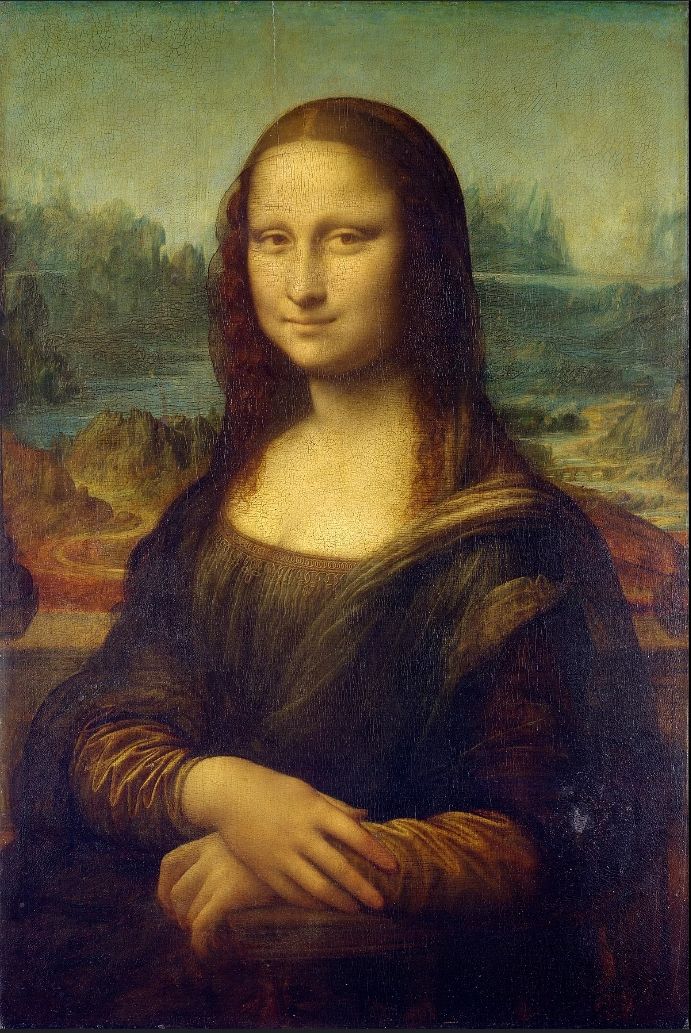
2. THE BIRTH OF VENUS by Sandro Botticelli
Next on the list of best paintings, we have The Birth of Venus by the Italian artist Sandro Botticelli. This painting by Botticelli demonstrates the fable of the birth of the goddess Venus. It depicts her emerging fully matured in a sea shell, arriving at the shores, carried by the Zephyr's winds(West Wind) where on the shores she convenes one of the elegances.
This best painting is inescapably discussed and related to another one of Botticelli's paintings, the Primavera. Just like The Birth of the Venus, The Primavera also comes with a mythological setting and both come under the best paintings category worldwide.
Both the paintings are idols of the Italian Renaissance but more than the Primavera, The Birth of the Venus is more prominent.
According to the experts, the specialty of The Birth is that this best painting does not oblige intricate analysis as the Primavera perhaps needs.
The Birth is taken as a straightforward representation of an ancestral scene from Greek mythology and its simplicity and vulnerable charm have earned it all the glories.
Despite being painted a very long time ago, this best painting can still be said to be in adequate condition due to the defensive egg yolk layer applied by its painter Botticelli.
This best painting is held in the Uffizi Gallery in Florence, Italy.
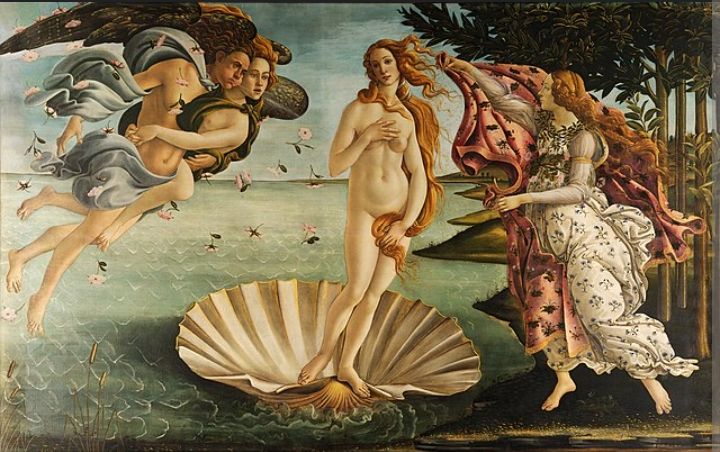
3. THE CREATION OF ADAM by Michelangelo Buonarroti
Another one of the world's best paintings is The Creation of Adam painted by the Italian artist Michelangelo Buonarroti. This one is a gigantic mural creation that characterizes the creation story from the Book of Genesis. The protagonist figures of this, painting are said to be God and Adam.
This incredible painting portrays one of the most significant instants in the creation story as per the Book of Genesis. This best painting demonstrates how God gave life to his first mankind creation, Adam.
In the painting, the hands of God and Adam do not touch which is said to be a genius way for Michelangelo's portray the phase difference between man and God.
In addition to characterizing exemplary human forms, this painting is one of the first endeavors in the chronology of art to illustrate God.
This wall painting is an aspect of perplexing sacred iconography.
This best painting spans over 500 Square meters on the ceiling and consists of more than 300 figures.
One of the most significant and remarkable facts about this painting is that The Creation of Adam was painted on the ceiling of a chapel. Many other creations of Buonarroti decorate the walls of the chapel but the Creation of the Adam with its unique style makes it one of the best paintings of all time. It's said that it took him almost four years to complete the mural painting on the ceiling.
This best painting is a component of the statement in the Bible and hence has religious importance as well.
The Creation of Adam is one of the most imitated religious creations of the world.
This fresco is present in the Sistine Chapel's ceiling in the Vatican Palace.
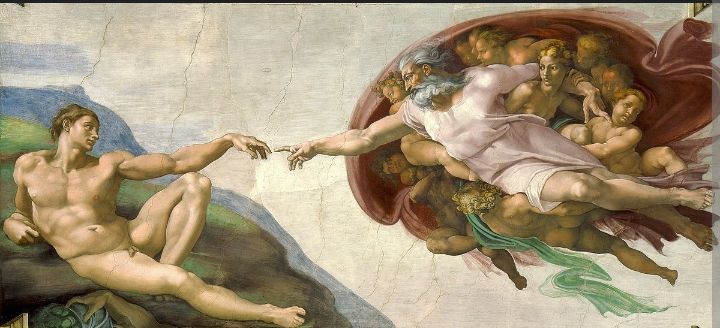
4. THE LAST SUPPER BY Leonardo da Vinci
Next on the list of best paintings, we have The Last Supper by Leonardo da Vinci.
This phenomenal painting is said to be one of the most treasured, extensively studied, and largely replicated paintings existing in the world.
Although being replicated innumerable times, the specialty of this best painting includes the size of the original one, which is said to be about 15 feet by 29 feet.
The Last Supper illustrates the last meal of Jesus with his disciples before being captured and crucified.
What makes this best painting even more interesting is the fact that despite being iconic and a world-famous painting, you won't find it in a museum. Leonardo da Vinci painted this unusual and religious painting directly on the dining auditorium wall of the convent of Santa Maria Delle Grazie in 1495, and the eternal home of this phenomenal painting is a Convent in Milan, Italy.
Leonardo da Vinci tried to break the usual painting style and norms while painting this huge creation and through his tempra-on-stone experiment he sought of protecting the painting and the colors for a long time. Unfortunately, this endeavor turned out to be a failure, and the effect of time on the walls, including the impacts of world war ll, resulted in ruining the glory of this glorious painting. Several restoration efforts were made but could not refurbish it much to its original state.
There are numerous reasons and questions behind this painting that has made this painting remarkable in the history of the art World. The meaning of the food in this Last Supper painting is still now among the most controversial facts in the world of art.
Apart from controversies and restorations, this painting is also popular for its rare availability issue. Although The Last Supper is one of the most sought glamour in Italy, it's still very difficult to see this painting in reality without patience and pre-planning.
As the convent that stores this beauty, was not meant for crowds, hence only 20-25 people can visit there at once. So it's estimated that to see this painting, one must be prepared with advance tickets two months prior.
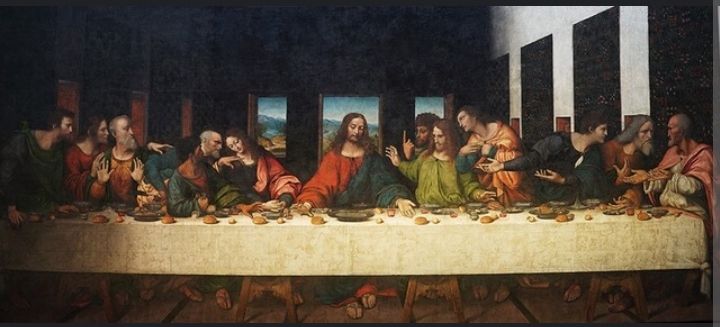
5. SACRED AND PROFANE LOVE by Tiziano Vecelli
Next on the list of best paintings, we have Sacred and Profane Love by history one of the most distinguished Renaissance painters. This painting is said to be created in the early 16th century which makes it one of the most priceless antique beauties.
What adds more to the mystery of this best painting is its true meaning and true identity of the pictures. It's usually said that this painting was designated in an extravaganza of a wedding. The controversy over this painting is usually about who the women in the painting are...
The woman in the white clothes in the picture is assumed to be representing a bride, and it's also believed that this painting was assigned by a Venetian Government employee named Nicolo Aurelio who occurred to be a secretary of the governing body of the republic of Venice at the period. Nicolo was about to get wedded to a widow called Laura Bagarotto who is most probably said to be the woman in the painting.
One of the most intriguing facts about this best painting is that its current name, Sacred and Profane Love was not assigned by the painter himself. It emerged around two centuries later during a roster. So it's said to have not much relation with the actual meaning of the painting.
The background of this painting adds to the beauty as well as glam of this best painting. And the animals presented in the background are said to be adding to the meaning of the painting. The background of the painting includes Rabbits that were symbols of eros and fertility during the Renaissance. Taking hints from all this it's therefore concluded that this painting was most probably designated for a marriage.
After its completion, what happened to it stayed a mystery until 1608, when it was brought to Rome where it still resides in the Borghese Art Collection and is being used for public display at Galleria Borghese in Rome.
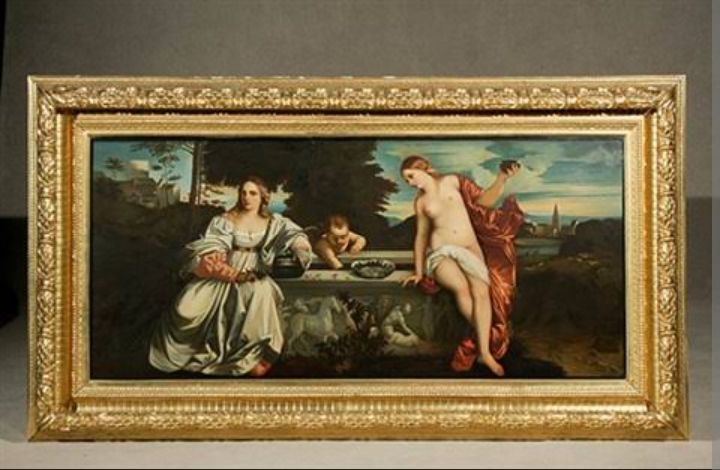
6. THE ANCIENT OF DAYS by William Blake
The next one in this list of historical best paintings we have is The Ancient of Days. This one is a picture by William Blake which he painted for his publication - Europe, a Prophecy which was out in 1794. The meaning of this tremendous painting covers Urizen, the incarnation of conventional doctrine and purpose, from his folklore. He is commonly characterized with innovator's equipment and is portrayed here as an aged man with a white beard crouching down and expanding his hand into the dingy space, clenching a separator over it, conveying that he is gauging the paraphernalia cosmos and compelling practical law on it. In his background, we can see cloud-like symbols and a circular shape. In this best painting, Urizen is demonstrated as Creator or god-like, as the name suggests. The Ancient of Days is one of God's titles, as inscribed in the Book of David. Through this stunning creation, Blake tries to illustrate that most characteristics can be comprehended and interpreted by science and god’s proficiency to facilitate direction in a chatline universe.
Apart from having such an elegant name, this painting is also known for having two additional names which are, The Great Artist or The Creation.
This best painting by William Blake is presently preserved at British Museum in London.
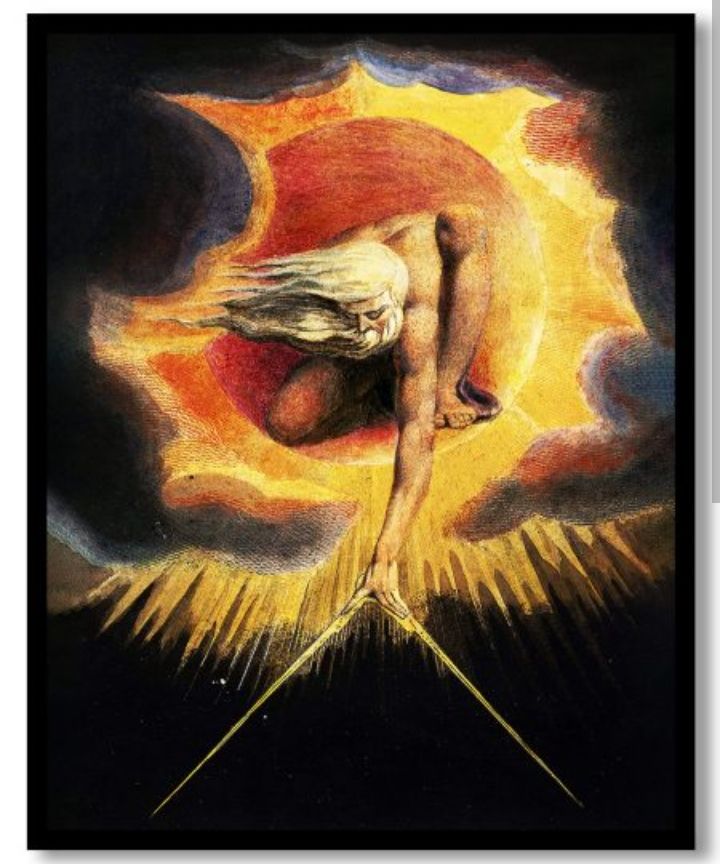
7. GIRL WITH A PEARL EARRING by Johannes Vermeer
The Girl With a Pearl Earring is an unforgettable masterpiece in the world of art and painting. This best painting is painted by Johannes Vermeer and is termed the chef-d'oeuvre of his life. This painting portrays a young girl wearing a well-oriented turban and a heavy pearl earring which indicates the origin of this terrific painting's name.
The Girl with a Pearl Earring was elected as the most fascinating painting in the Netherlands by the Dutch in 2006.
It is one of the rarest paintings that are permanently conserved in their native museums. The last time it was displayed away from the Netherlands was in Bologna, Italy, in 2014.
The extraordinary peculiarity of The Girl with the Pearl Earring and its cryptic arenas has gained this best painting the title of "Dutch Mona Lisa".
Some of the most interesting facts about this painting are that Johannes wandered precipitously through this creation of his.
Also, The Girl with a Pearl Earring is peculiarly small in size, estimating 17.5 by 15 inches.
It's also said that Johannes purportedly used a real-life model, not some imagination to paint this unbelievable painting.
It was also found that a reasonable number of paintings created by Johane's eldest daughter and muse contain similar earrings to the one in this great painting.
One of the most interesting facts about this best painting is that it even inspired a writer to write a complete novel. Tracy Chevalier is an American author who loved the painting since she was a child enlightened by it she wrote a novel with the same headline, which became best-selling and sold over five million copies in 36 languages.
And the story doesn't end here my friends.
There is a movie as well, with the same name, Girl with a Pearl Earring, brought to life by Scarlett Johansson and Colin Firth.
And this movie was inspired by the novel and is romantic and was nominated for so many great awards like the British Academy Film Awards, Golden Globe Awards, etc. And all the inspiration for these great successes is said to be incited by, the great artwork of Johannes i.e The Girl with a Pearl Earring.
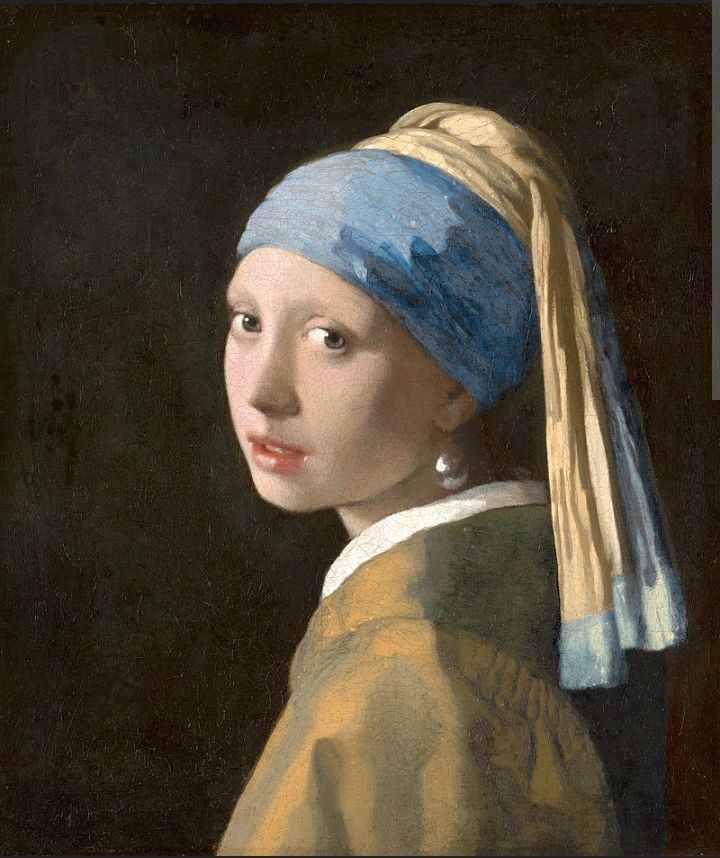
8. THE NIGHT WATCH by Rembrandt Van Rijn
The next on the list of world-famous best paintings we have The Night Watch. This was painted by Rembrandt Van Rijn who was a Dutch painter. It's said to be completed in 1642 which is also known as the peak period of the Dutch Golden Age.
This painting displays a community resemblance to a militia company. The Night Watch is an Oil Painting on canvas that exhibits the union of Captain Frans Banning Cocq and his lieutenant, Willem Van Ruytenburgh, encompassed by sixteen of their pals.
The most interesting features of this painting are- firstly, it's a gigantic size that is around 363 cm × 437 I'm ( 11.91 feet × 14.34 feet). Secondly, the constructive usage of light and shadow adds further to its beauty. Thirdly, the intuition of movement in what would have predominantly been a stationary military resemblance, makes it so different and unique.
This best painting is known by two other names as well, which are, " Militia Company of District all under the command of Captain Frans Bannick Cocq", and " The Shooting Company of Frans Banning Cocq and Willem van Ruytenburch".
For most of it, The Night Watch was garnished with a dark varnish which cited the false notion that it depicts a dark setting which led to the title Night Watch.
This notable best painting was kept at the Kloveniersdoelen in Amsterdam till 1715. After that, The Night Watch was moved to the Town Hall. Then in 1808, it was shifted to the Rijksmuseum in Amsterdam where it remains with all its honors.
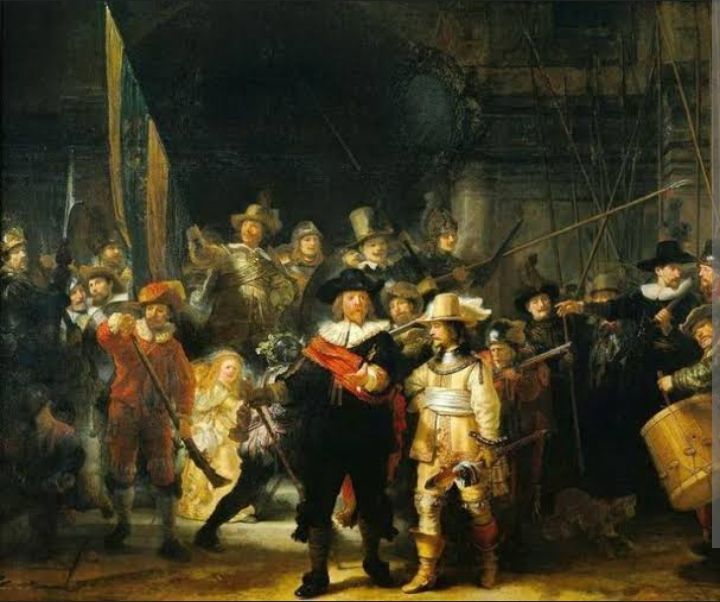
9. THE SISTINE MADONNA by Raffaello Santi
Next one in the list of best paintings we have The Sistine Madonna by the famous Italian painter, Raphael. The Sistine Madonna is also known as The Madonna do San Sisto. This is an incredible oil painting that was delegated by Pope Julius I'll in 1512, for the church of San Sisto, Piacenza. The Sistine Madonna was one of the conclusive Madonnas which Raphael painted and this painting was hailed as "a truly rare and extraordinary work" by Giorgio Vasari. This best painting gauges 265cm by 196cm. This painting portrays the Madonna, cradling Christ's Child and flanked by Saint Sixtus and Saint Barbara strutting on clouds before dozens of obscured putti, whereas two distinguished winged putti comfort on their elbows underneath her.
The secret in this painting lies in its background, which appears like clouds from a distance, but if closely scrutinized, they are supposed to be heads of angels.
Also, the two adorable angels in the lower portion of the painting became part of various posters and postcards.
The Sistine Madonna is prominent for its significance in the Russian and German art settings and this was moved to Dresden in 1754. However, after the 2nd World War, this best painting was transported to Moscow for a decade. But again it was relocated to Germany where it still resides.
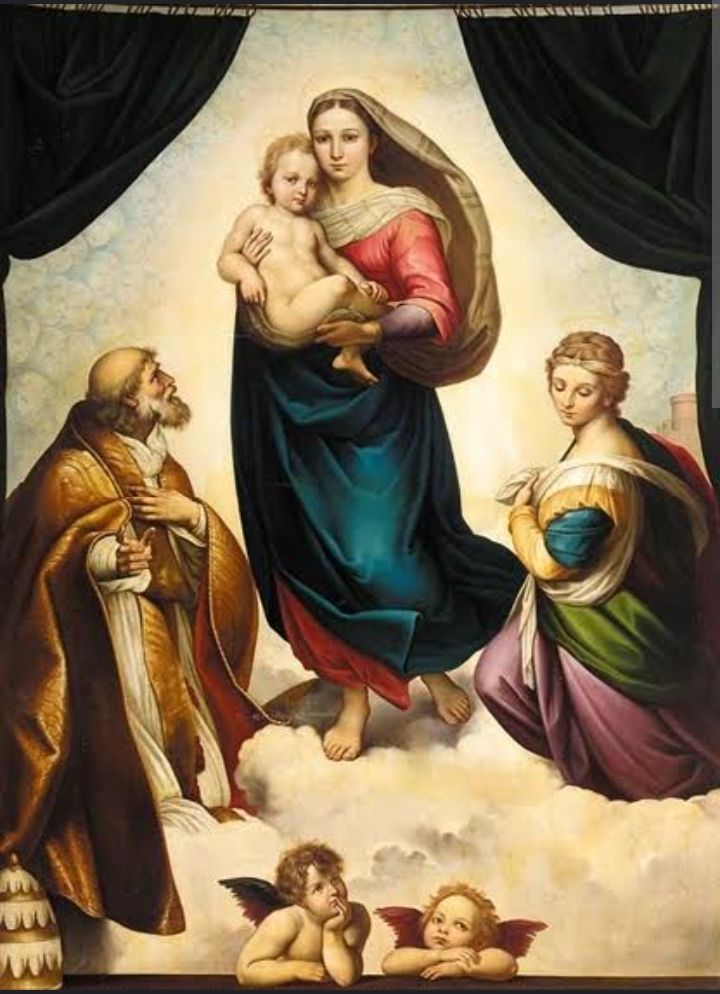
10. LIBERTY LEADING THE PEOPLE by Eugene Delacroix.
The next one on the list of best paintings we have is The Liberty Leading the people which was painted by Eugene Delacroix. This painting corresponds to the July Revolution in Paris which eliminated the restored Bourbon King, Charles X from the throne and ended his rule. This painting received mixed inspections initially but later retained glory and became an emblem of the July Revolution of 1830 and rationalized revolution.
This best painting known as the Liberty Leading the People illustrates a semi-nude image of who leads the unprecedented painting, as she moves forward with a throng of determined revolutionists in her imprint. The protagonist figure in this painting is pertained to as Marianne, who is said to be the personification of liberty, which is a distinctive souvenir used throughout the chronology of Art.
It's also interesting about this painting that Marianne wears a peculiar kinda hat and her image in the picture was said to be presumably stimulated by the illustration of an Irish female pirate.
Also, the flag demonstrated in the picture holds an exceptional significance and different importance of its own.
There has also been quite some controversy regarding the identity of the man with the top headdress.
One of the most fascinating facts about this best painting is that this painting is said to be the main provocation for the most iconic and extraordinary monuments of the world i.e The Statue of Liberty in New York.
The remarkable facts about this don't end here. One of the most startling facts about The Liberty Leading the People states that although this painting gained enormous glory and became a great inspiration of its time, still, soon after it was completed, it was banned from public view. Surprising as it sounds, the reason for this was said to be the fear of its political connotation. The government was afraid of similar revolutions and hence took this step. Currently, this great painting is hung at The Louvre Museum in Paris and is accessible for unrestricted view.
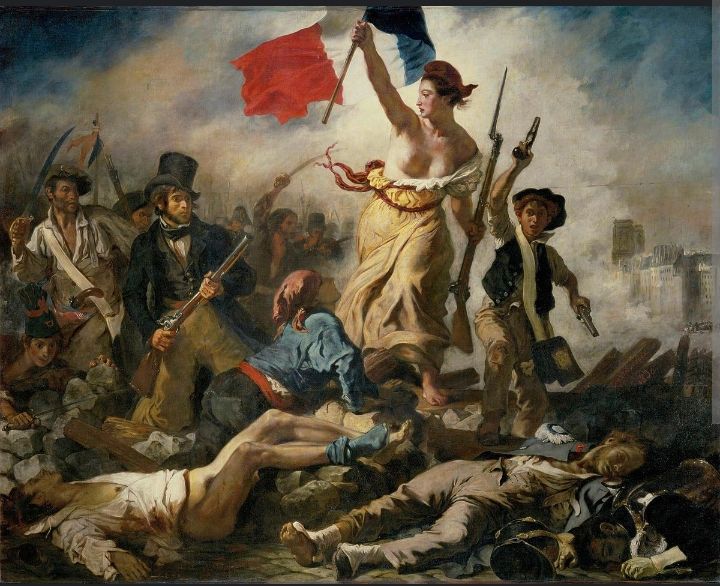
11. THE MADONNA LITTA by Leonardo da Vinci
The next one on the list of Best Paintings we have is The Madonna Litta by Leonardo da Vinci which is a delinquent 15th-century painting. Currently, The Madonna Litta is kept in the Hermitage Museum, Saint Petersburg as an ancestral virtue to Leonardo da Vinci. This best painting portrays the Virgin Mary breastfeeding the Christ kid, a devotional theme comprehended as the Madonna lactams. The pictures are put in a shady environment with two arched spaces, like in Leonardo's initial Madonna of the Carnation, and a hilly scenery an aerial viewpoint is visible in the background. The picture shows Christ holding a gold flinch in his left hand In his left hand, which is metaphorical of his prospective Passion.
Scholastic judgment is split up on the painting's attribution, with a few people considering it to be the endeavor of a disciple of Leonardo da Vinci, like Giovanni Antonio Boltraffio or Marco d'Oggiono. However, the Hermitage Museum contemplates the painting to be a signature stint by Leonardo da Vinci. This masterpiece puts up with its name from the House of Litta, which is a Milanese aristocratic family in whose compilation it stayed for most of the nineteenth century.
There is plenty of controversy over whether this picture should be credited to Leonardo da Vinci or one of his attendants. In 1482, Leonardo referred to that he had finalized one Madonna, and had nearly completed another one as well. This additional Madonna mentioned can either be the Madonna Litta or the Madonna of the Carnation, which is kept in the Alte Pinakothek, in Munich.
The crucial reason why people have disputes over whether this illustration is thoroughly generated by Leonardo is because of the striking landscape in the background, the relatively pale costume of Mary, the shades in this picture, and the absence of features in her look. People assert that these characteristics are not of the disposition that one would anticipate from Leonardo da Vinci.
Specialists, however, acknowledge that the composition of the painting and particularly the sophisticated posture of Mary and child Jesus could agreeably be from Leonardo da Vinci. So, it is not uncertain that Leonardo commenced this masterpiece, but that a subordinate, perhaps Giovanni Antonio Boltraffio, completed this best painting.
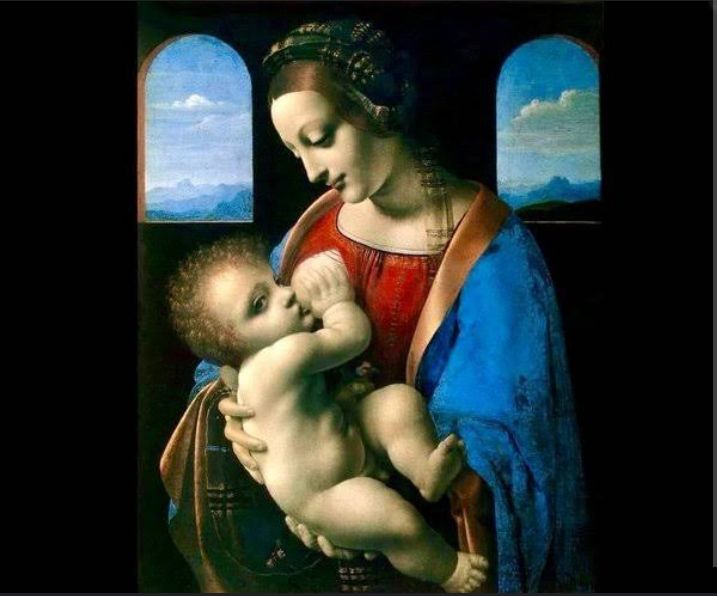
12. LANDSCAPE WITH THE FALL OF ICARUS by Pieter Bruegel, the elder.
The next best painting here we have The Landscape with the fall of Icarus which is painted by Dutch artist Pieter Brugel, the eldest. For a very long time, Landscape with the Fall of Icarus was believed to be developed by the ushering painter of Dutch and Flemish Renaissance painting, Pieter Bruegel the Elder. The configuration is so astonishing that several curators recognize it as one of the distinguished painter’s designs. Regardless, specialized inspections from the 1990s concluded the aspects to be considered as relatively skeptical, and the art, conceivably painted in the 1560s, is presently usually glimpsed as a promising initial specimen by an unidentified artist of Bruegel’s misplaced original, probably from approximately 1558. There are two statements for that theory – the portrait is in oil whereas Bruegel’s further paintings on canvas are in tempera. The different aspect is that the consultants notice it to have a rather vulnerable trait about different Bruegel's, although this concern is confounded by delinquent overpainting. The caption on the gallery wall for the painting contains a question mark precisely after Bruegel’s title.
Landscape with the Fall of Icarus is an oil painting masterpiece, assigned to Pieter Bruegel the Elder and it still is counted as the world's most ancient and best painting to date. It indicates the Greek mythical symbol, Icarus, dropping into the ocean in the downward right-hand intersection. John Sutherland interprets the painting as a parable on mortal aspirations.
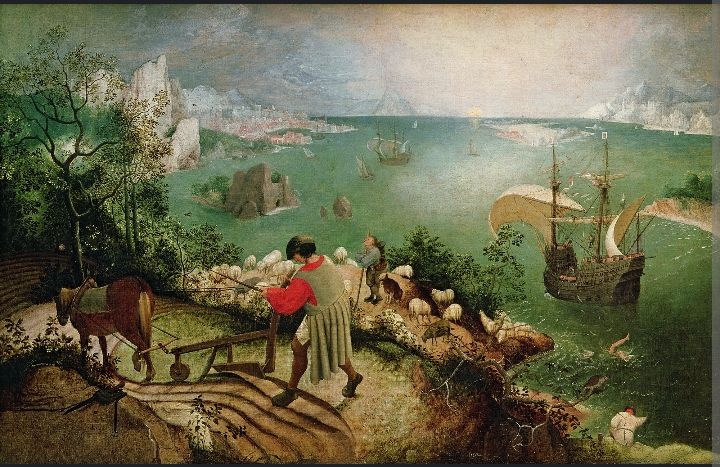
13. THE SCHOOL OF ATHENS by Raffaello Santi.
The next world-famous best painting we have is The School of Athens. The School of Athens is a masterpiece painting, penciled by Raffaello Santi, around 1509 and 1511. This masterpiece by Raphael is a fresco that festoons one of the “Raphael Rooms” or “Stanze di Raffaello” which is in the Vatican. This best painting is said to be delegated by Pope Julius II.
The School of Athens is contemplated to be one of Raphael’s supreme chef-d'oeuvre. It has also been characterized as the “incarnation of the refined essence of the Renaissance.”
The School of Athens portrays an assembly of scholars, scientists, and mathematicians, comprising historical gems from Ancient Greece, involving Pythagoras, Plato, Aristotle, Pythagoras, Heraclitus, and Archimedes.
What makes this wonderful fresco even more interesting is that the Italian artists Leonardo da Vinci shown as Plato, Heraclitus representing Michelangelo, and Euclid representing Bramante are accentuated in the fresco.
This best painting remarkably underlines factual stance prediction, an illustrative aspect of the Renaissance era. It's said that Raphael comprehended the viewpoint of Leonardo da Vinci, whom he portrayed as Plato in the middle of the fresco. The principles of this fresco, like the resurrection of Ancient Greek doctrine and civilization in Europe were stimulated by Leonardo's distinctive quests in engineering, theatre, geometry, optics, architecture, history, physiology, anatomy, and his art.
This best painting by Raphael is placed in the “Stanza Della Segnatura” which lies in the Apostolic Palace in the Vatican. This estate is said to be the authorized property of the Pope and the Raphael Rooms were entertainment rooms but are presently an aspect of the Vatican Museums.
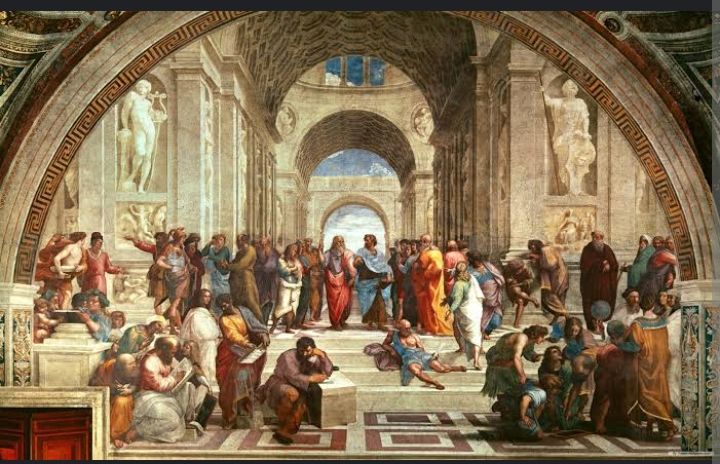
14. LAS MENINAS by Diego Velazquez
The next one in this list of Best Paintings we have, The Las Meninas which is painted by Diego Velazquez.
This masterpiece known to the world as Las Meninas is also affirmed as "lazy meˈninas" (which in Spanish means "The women-in-waiting" ) and is an ancient classic painting, which is held in the Museo del Prado in Madrid. It's termed as one of the greatest works of Diego Velazquez who was the renowned dominating artist of the Spanish Golden era. This best painting has been contemplated as one of the extensively highly examined endeavors in Western art, because of how its complicated and perplexing configuration puts forward questions about truth and delusion, and the unstable alliance it establishes between the spectator and the pictures portrayed.
As speculated by F. J. Sánchez Cantón, this masterpiece artwork illustrates the fundamental hall in the Royal Alcazar of Madrid at the time of the domination of King Philip IV of Spain, and grants numerous pictures, broadly recognizable from the Spanish court, apprehended, as per some announcers, in a specific period as if in a photograph. Some of the images gaze out of the painting towards the spectator, whereas others converse with themselves. The apparent protagonist of the painting, Infanta Margaret Theresa who is a five-year-old is enveloped by her staff of maidens of honor, a bodyguard, a chaperone, a dog, and two dwarfs. Right behind them, Velázquez represents himself toiling on a huge canvas. Velázquez gapes outwards, far from the visual area to where a spectator of the portrait would be standing. The background presents a reflector that reveals the upper physiques of the queen and king.
The Las Meninas has been acknowledged as one of the extensively significant paintings in the chronology of Western painting for a very long duration. Baroque artist Luca Giordano asserted that this best painting illustrates the "theology of painting". Then in 1827, the president of the Royal Academy of Arts,
Sir Thomas Lawrence interpreted the endeavor in a note to his heir David Wilkie as "the true ideology of the art". Currently, this painting has been characterized as "Velázquez's ultimate accomplishment, a highly self-conscious, planned presentation of what art could accomplish, and possibly the vastly reviewing statement ever rendered on the prospects of the ancient artworks".
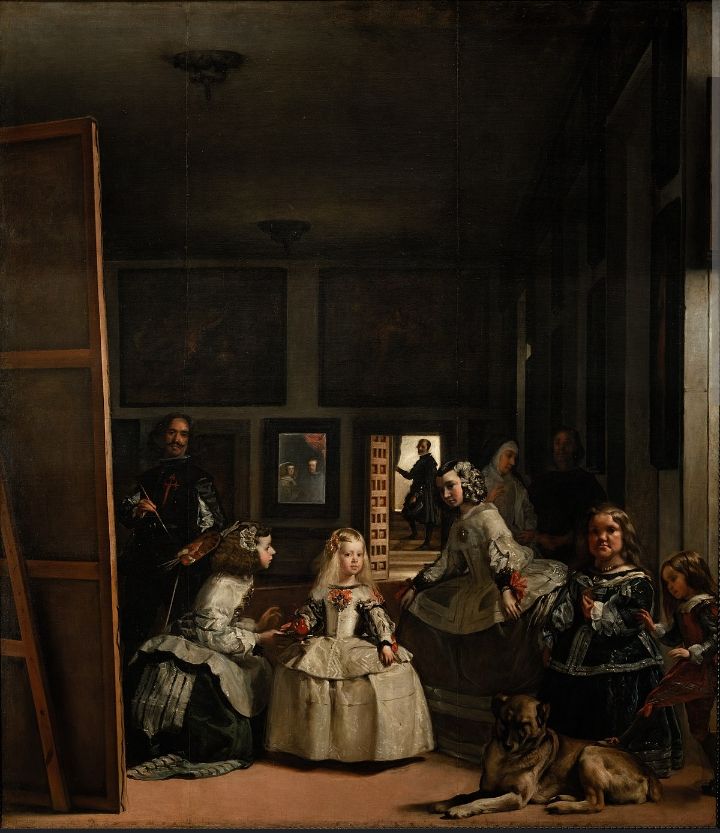
15. THE BEHEADING OF SAINT JOHN THE BAPTIST by Michelangelo Da Caravaggio.
Moving on to the list of best paintings we have, The Beheading of Saint John the Baptist is known as the iconic artwork of the famous Italian artist, Michelangelo Da Caravaggio.
The beheading of Saint John the Baptist illustrates the biblical incident where John the Baptist was beheaded.
This best painting with oil on canvas artwork illustrates the beheading of John the Baptist where Salome keenly stands near a golden platter with him. It also depicts another woman who is also present there and she appears to be alarmed and agitated. It is believed that the lady is either an attendant or Herodias who learns that he had done a blunder. In this astonishing picture, a jailer is also observed delivering schooling to the executioner who is leaning gripping a blade in his right hand and hooking the Baptist to the ground with his left arm.
This classic painting is believed to be finalized in Malta in 1608. This best painting measures 3.7 m by 5.2 m and is Caravaggio's most gigantic composition and also, the exclusive one that carries his signature which is spotted by the blood pouring out of the slashed throat of John. The portrait's background was said to be pulled out from his time in a jail in Malta.
The Beheading of Saint John the baptist is currently placed in the Rhetoric of St. John's Co-Cathedral in Valletta, Malta.
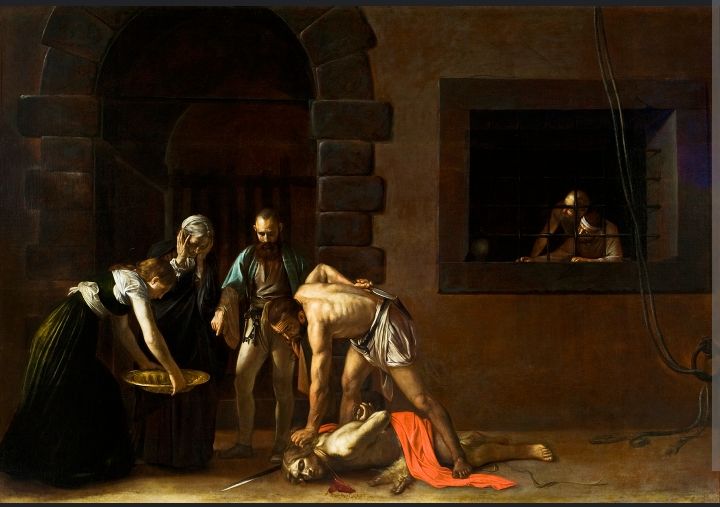
16. THE RETURN OF THE PRODIGAL SON by Rembrandt Van Rijn.
Next one on the list of best paintings we have The Return of The Prodigal Son which is painted by Rembrandt Van Rijn.
In the following half of the 1650s Rembrandt's years sustained a chain of downfalls. Numerous debts wrecked his pain and did not fetch any income at all. Proclaiming ruin, he auctioned the whole of the possession and shifted to Amsterdam. He sacrificed his assemblage, comprising of gorgeous art, without a devoted and cherishing spouse Hendrickje, who was deceased, being excommunicated from the Church for fornication with Rembrandt, fell sick with tuberculosis his ward Titus, and daughter-in-law perished of suffering. Victim semi-gone blind, relinquished by all, incapable of holding the brush and therefore ties up it with fiber, the artist created his ultimate masterwork.
This best painting which is known as "The return of the prodigal son" was said to be generated promptly before the demise of the artist in 1669. It illustrates the ultimate events from the gospel parable: the minor son left his father's home once and was reimbursed, full of stigma. Plunging on his knees before the aged father, he concealed his face in his knees, wishing for compassion and kindness. The looks illustrated in the figure, like the weight of their heads scraped, ragged dresses like that of a beggar, shoes smashed, and the entire manifestation of the stranger confessed that he occurred to discover a lot and go through numerous experiences.
The two protagonist figures of the painting i.e the father and his son, are likely to reconcile by showing a brave act of forgiveness and kindness, are they appear to be approaching for a hug.
Reviewers assume that the three major identities from the painting symbolize the painter himself, in various years of his existence.
This masterpiece artwork was attributed to a Hermitage and is present there till date.
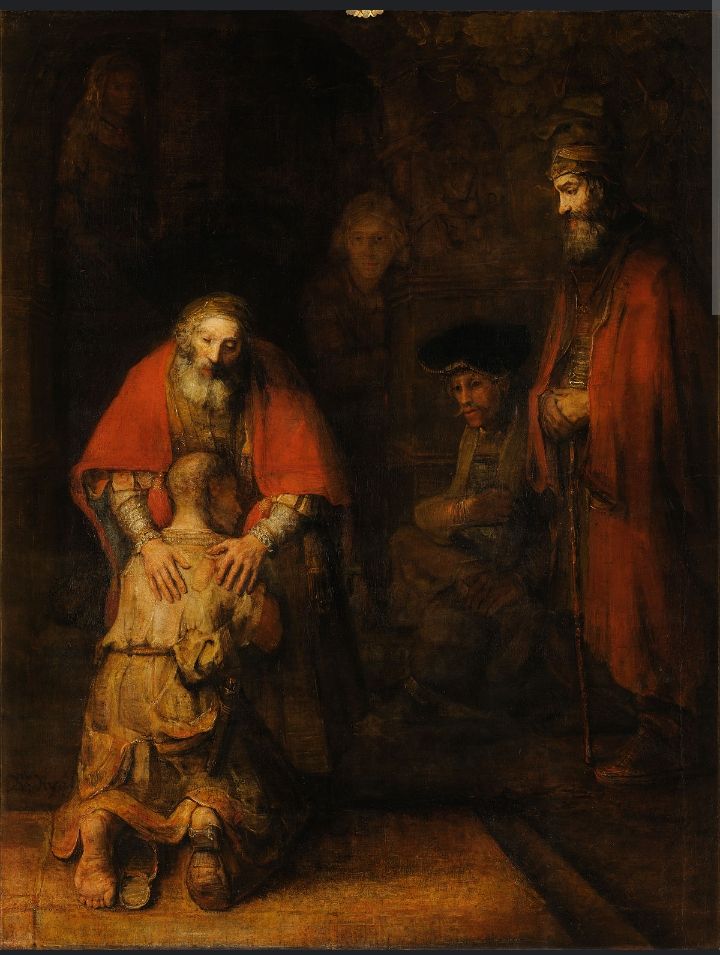
17. CHRIST CARRYING THE CROSS by El Greco.
The next one on the list of best paintings ever we have, is Christ carrying the cross. This painting is said to be one of the finest and most classic artworks of El Greco.
This marvelous painting is said to have been produced around 1600 - 1605. El Greco had an extended profession in Spain and generated a multitude of paintings of Christ dragging the cross as it is a significant and idealistic panorama from the Bible.
The scene presented in this best painting is not a narrative phenomenon. There are no additional personalities and the environment does not deviate interest from Christ. The environment of Christ Carrying the Cross is a stormy, gloaming atmosphere which is a typical characteristic of El Greco's work.
The most intriguing characteristic of this painting is Christ's eyes which are painted as sensational and overemphasized bursts in them. His gazes are the crucial component of the portrait as they convey so much sentiment. There is a subtle difference between his muscular shoulders and the feminine elegance of his hands.
El Greco raises the gloomy environment of the painting with cheerful Venetian colors and subtle radiance which strengthens more emotional sweetness of the resemblance.
The crown of Christ which is depicted to be of thorns is enhanced by a glint of an illuminated halo. The invaluable composition of the crown exhibits each detailed knitted branch carrying small sprouts. It settles flawlessly on Christ's head and a few dips of blood have plummeted onto his neck from the damage inflicted by the thorns.
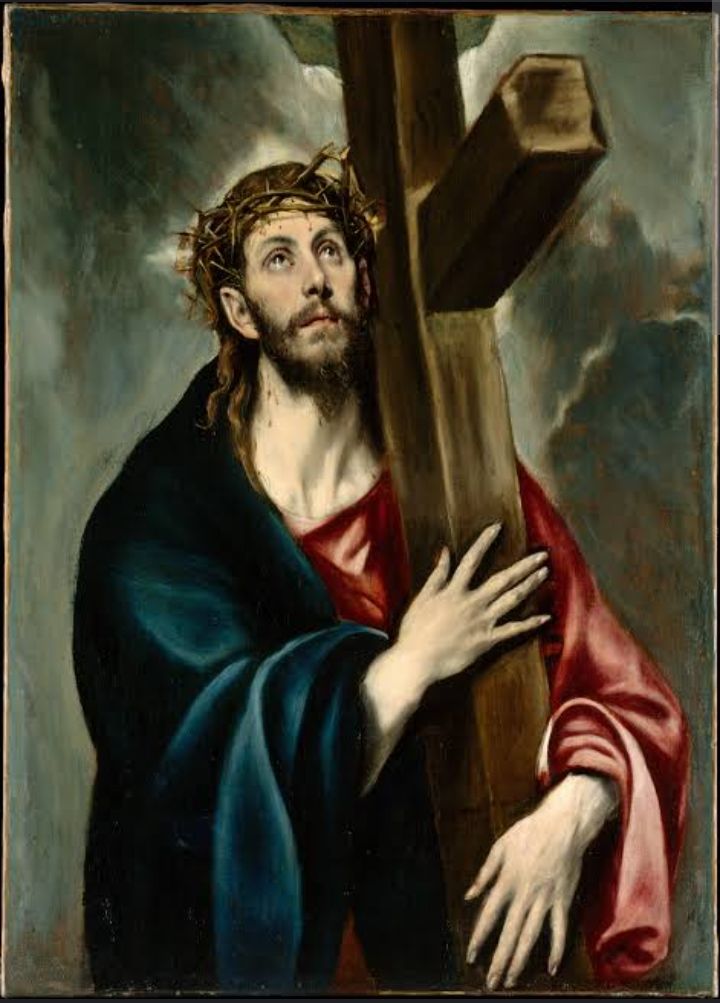
El Greco's arts are so distinguished because they are dazzlingly colored and decorated but also have distinct holiness and deliver an impulse for prayer and dedication. El Greco is also known for painting a few other biblical scenes, like the:
• Christ Healing the Blind
• St. Peter Andre St. Paul
• Resurrection
18. PERSEUS AND ANDROMEDA by Peter Paul Rubens.
The next one on the list of best paintings is "Perseus and Andromeda" which is also known as "Perseus rescues Andromeda" and was painted in 1622 by Peter Paul Rubens. This fabulous painting is said to have stayed in Rubens’s dwelling until his demise and was then collected by and harbored in the Hermitage Museum in St. Petersburg, Russia. This oil painting tells the story of Perseus subsiding from slaughtering Medusa to protect Andromeda. It portrays Perseus clasping the head of Medusa and untying the convoys on Andromeda, while somewhat indicating Pegasus, the deity of glory, and Cetus the Ocean Monster, who was destroyed earlier.
This painting is comparable to that of an initial composition by Rubens known as "Perseus frees Andromeda" which is presently in Gemäldegalerie, Berlin.
The protagonist of the painting is Perseus, who is shown enclosed by three putti, one clasping the canopy with Gorgon's reflection, one unraveling the winner's helmet, while the third carries the winged steed Tobiano Pegasus. Overhead, Victory, the divinity of glory, is illustrated in the deed of putting a crown on the protagonist's head. Two other putti unrestricted Andromeda from the gravel to which she is fastened. Cetus, the sea demon overthrown by the hero, is demonstrated in the lower part of the painting.
This masterpiece presumably stayed in Rubens' place until his demise. An inscription from 1684, illustrating the beginning of Rubens' home in Antwerp, reveals the portrait through the window of the second floor of the demonstrated house. In the summer of 1769, this masterpiece's artwork was obtained by the Russian Hermitage Museum from the accumulations of Heinrich von Brühl. It is now kept on the second floor at the Rubens Hall of the Hermitage Museum.
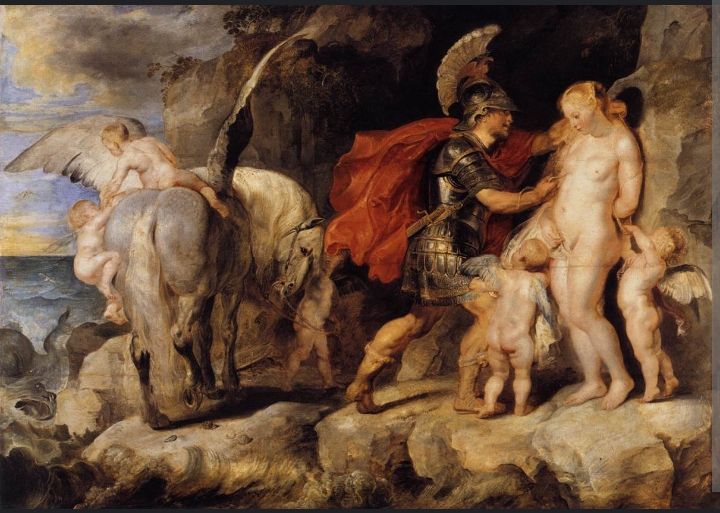
19. DEPOSITION FROM THE CROSS by Giorgio Vasari.
Coming to the next one in this list of best paintings we have, "Deposition from the cross" – which is known to be painted by Giorgio Vasari and is currently reserved in Camaldoli, near Tuscany. If you were to elucidate to somebody ignorant of what characteristic is an ingenious technique, it would be one of the orators and reasonable examples.
It is considered about this famous painting with the assistance of Giorgio Vasari in art record is priceless, but as an artist, he is relatively middling. Even though Vasari, of course, was renowned to be proficiently skillful and qualified in life and as a painter also he was extremely prevalent. Many of the hermitages of Tuscany, Florentine churches, and Roman castles are adorned with art and frescoes by Vasari. Regardless, all of them, although uncovering reasonable wisdom of the basics of the craft of the Renaissance, already relate to the duration of the concern, postmaster general. In the skill of Italian XVI, it is known as idiosyncrasy.
This masterpiece is an exceptionally familiar panoramic maneuver. That is the reason why it is often compared to how it composes Vasari and artists of different approaches demonstrate the significance of idiosyncrasy and its discrepancy (not an endorsement of the latest) from the prior scenic accomplishments. This best painting from the Italian artist may be rough, tragic, influential, or gentle.
Vasari is known to have the drop from the cross auditorium. Surprising.
The chore of the Vasari doesn't appear to the connotation of biblical affairs, but to "earn the audience generously." This apprehends the nature of idiosyncrasy.
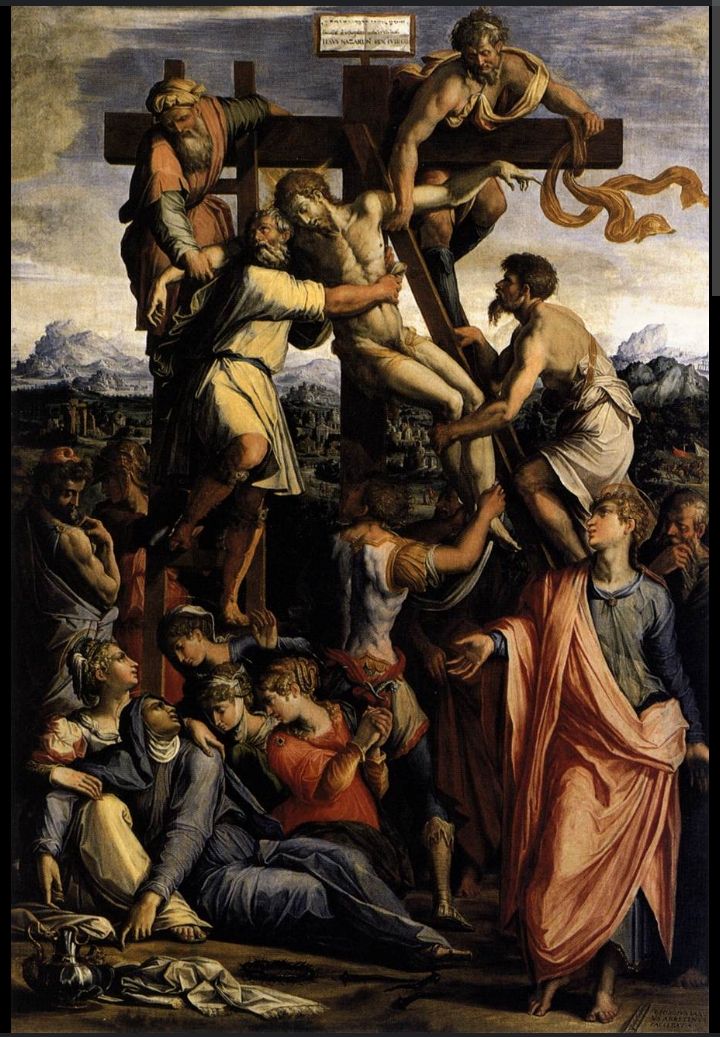
20. THE PERSISTENCE OF MEMORY by Salvador Dali.
The next best painting which is world-famous for its uniqueness is the
Persistence of Memory, furthermore known as Soft Watches or Melting Clocks. This incredible art is one of Dalí’s most prominent works and it gained great glory by the time Dali was 28. Many of his favored recurring visions are attended in this painting. The environment is one of what he frequently used, i.e The beach area of Catalonia at Cape Creus. His melting-clock imagination satirizes the rigidity of chronometric time. The clocks themselves appear to be like smooth cheese. Dalí mentioned that the idea of this painting was illuminated by hallucinations after dining with Camembert cheese. (He capitalized on a method he prescribed as the “paranoiac-critical method” where he intentionally aroused hallucinations as a route to his subconscious.)
In the middle of the painting, beneath one of the clocks, is a shapeless human face in silhouette, a portrayal that also emerges in his premature work- The Great Masturbator (1929). The ants on the vessel are said to be representing wreckage.
This best painting has flared significant theoretical controversy. Some analysts assume the melting clocks in this painting are a retort to Albert Einstein’s -"Theory of Relativity". As analyst Dawn Ades states- “the feeble watches are an insentient emblem of the relativity of space and time.”
The Persistence of Memory is said to be displayed for the first time in The Julien Levy Gallery, New York in 1932 and was dealt for $250. Heretofore, 1934 this classic masterpiece has been in the exhibition of the Museum of Modern Art (MoMA) in New York City, which interestingly had received it from an unknown supporter.
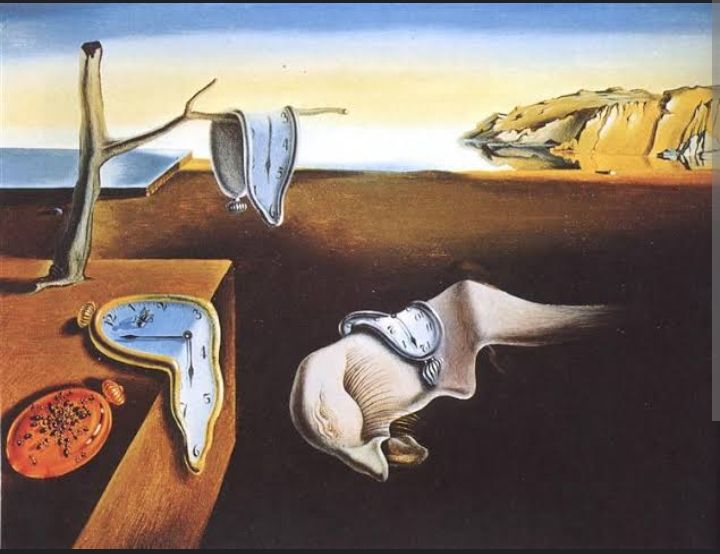
An artist is not paid for his labour, but for his vision- James Whistler .
This quote unfolds the key feature of paintings and art, i.e Vision. Even simplest of the paintings can have the most intriguing meaning within. It's the vision of the artist what he wants to display , and the vision of the viewer of what he perceives from the art.
Hope you found this article helpful.
Thanks for reading.
Keep supporting and Don't forget to share your opinions with us...
Appreciate the creator